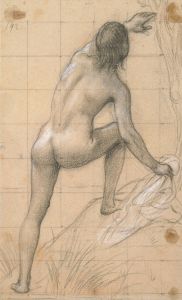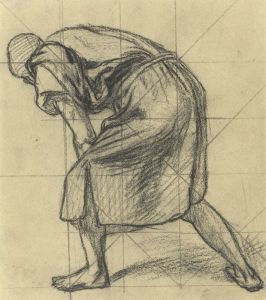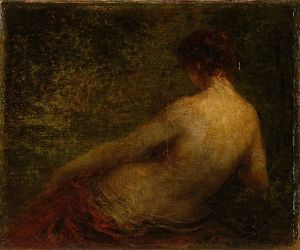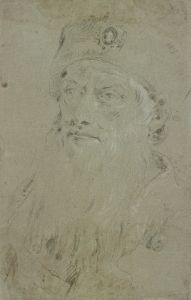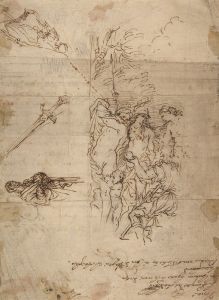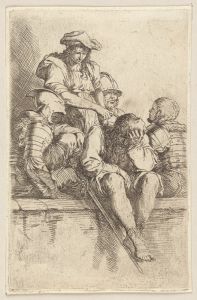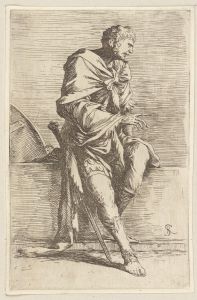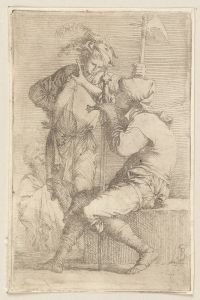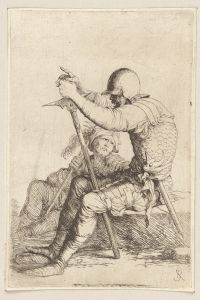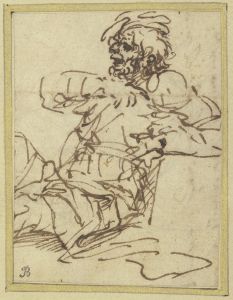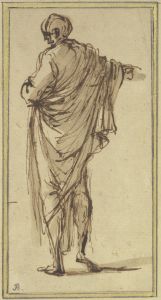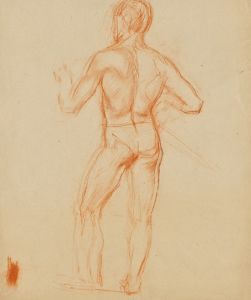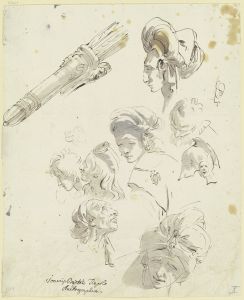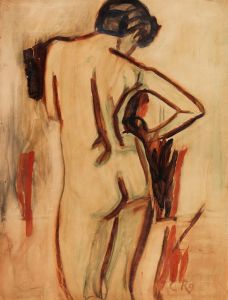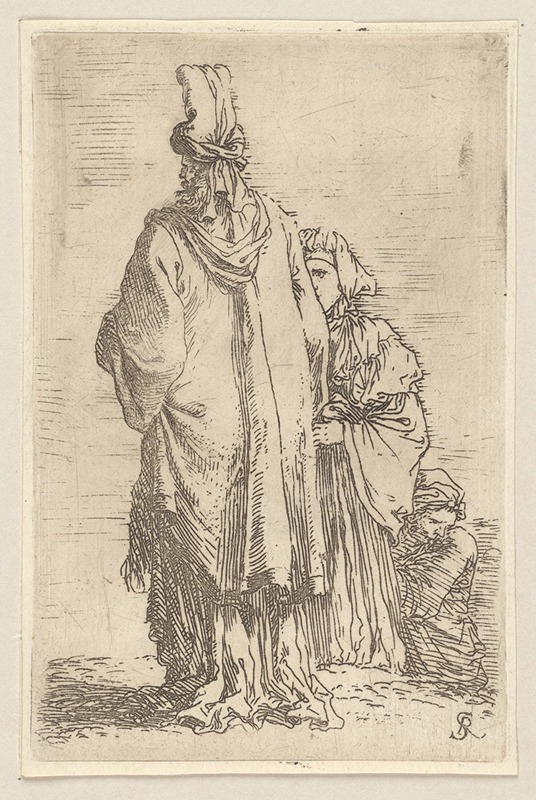
Oriental in Turban, Seen from Behind, with Two Women
A hand-painted replica of Salvator Rosa’s masterpiece Oriental in Turban, Seen from Behind, with Two Women, meticulously crafted by professional artists to capture the true essence of the original. Each piece is created with museum-quality canvas and rare mineral pigments, carefully painted by experienced artists with delicate brushstrokes and rich, layered colors to perfectly recreate the texture of the original artwork. Unlike machine-printed reproductions, this hand-painted version brings the painting to life, infused with the artist’s emotions and skill in every stroke. Whether for personal collection or home decoration, it instantly elevates the artistic atmosphere of any space.
"Oriental in Turban, Seen from Behind, with Two Women" is a painting by the Italian Baroque artist Salvator Rosa. Salvator Rosa was born on June 20, 1615, in Arenella, a suburb of Naples, and he is known for his diverse talents as a painter, poet, actor, and musician. Rosa's works are characterized by their dramatic intensity, rugged landscapes, and often unconventional subject matter.
This particular painting, "Oriental in Turban, Seen from Behind, with Two Women," is a fine example of Rosa's ability to capture exotic and enigmatic figures. The painting depicts a man, identifiable by his turban, seen from behind, accompanied by two women. The man’s attire and the turban suggest an Oriental or Middle Eastern origin, which was a common theme in European art during the Baroque period as artists were fascinated by the exoticism of the East.
The composition of the painting is intriguing, with the central figure's back turned to the viewer, creating a sense of mystery and inviting speculation about his identity and the nature of his relationship with the two women. The women are positioned on either side of the man, and their expressions and gestures add to the narrative complexity of the scene. The use of light and shadow in the painting highlights Rosa's skill in creating depth and texture, enhancing the overall dramatic effect.
Salvator Rosa's interest in depicting Oriental figures can be linked to the broader European fascination with the East during the 17th century. This interest was fueled by increased trade and cultural exchanges between Europe and the Ottoman Empire, Persia, and other regions. Artists like Rosa often incorporated elements of Oriental dress and customs into their works to evoke a sense of the exotic and the unknown.
Rosa's career was marked by his rebellious spirit and his desire to break away from the conventions of his time. He was associated with the Neapolitan School of painting and later moved to Rome, where he became part of the intellectual and artistic circles. His works often contained satirical and philosophical themes, reflecting his critical view of society and the art establishment.
"Oriental in Turban, Seen from Behind, with Two Women" exemplifies Rosa's unique approach to painting, combining his interest in exotic subjects with his mastery of dramatic composition and chiaroscuro. The painting is a testament to Rosa's ability to convey complex narratives and emotions through his art.
Salvator Rosa's legacy as an artist is significant, and his works continue to be studied and admired for their originality and emotional depth. His paintings can be found in major museums and collections around the world, where they continue to captivate audiences with their bold and evocative imagery.





